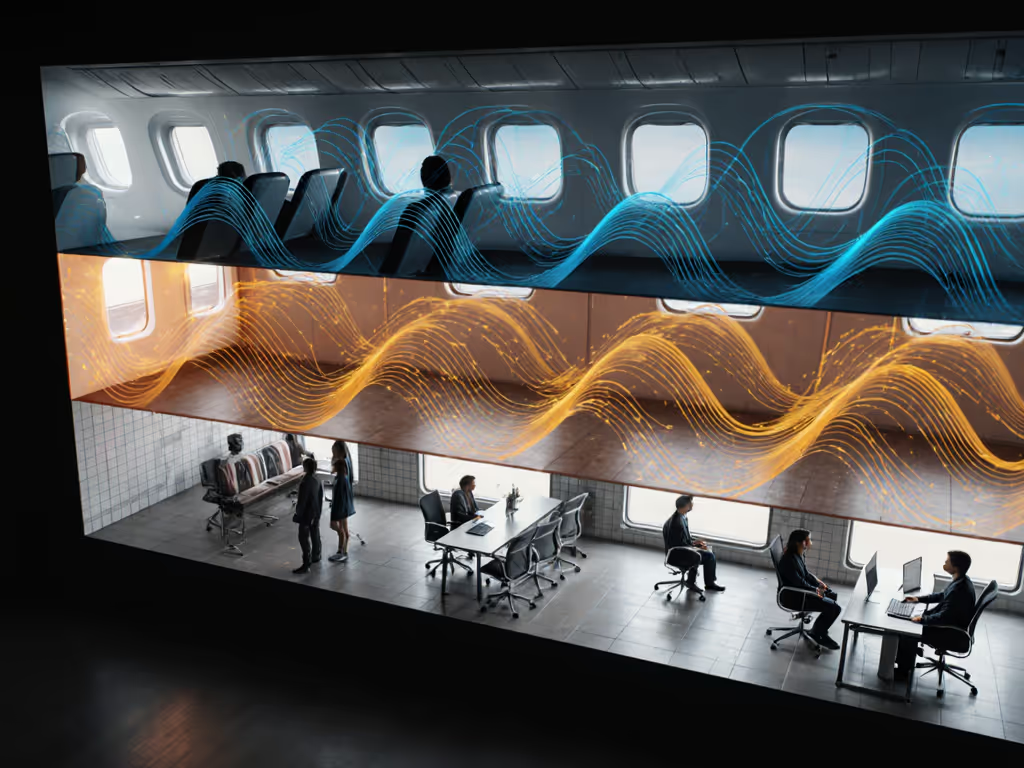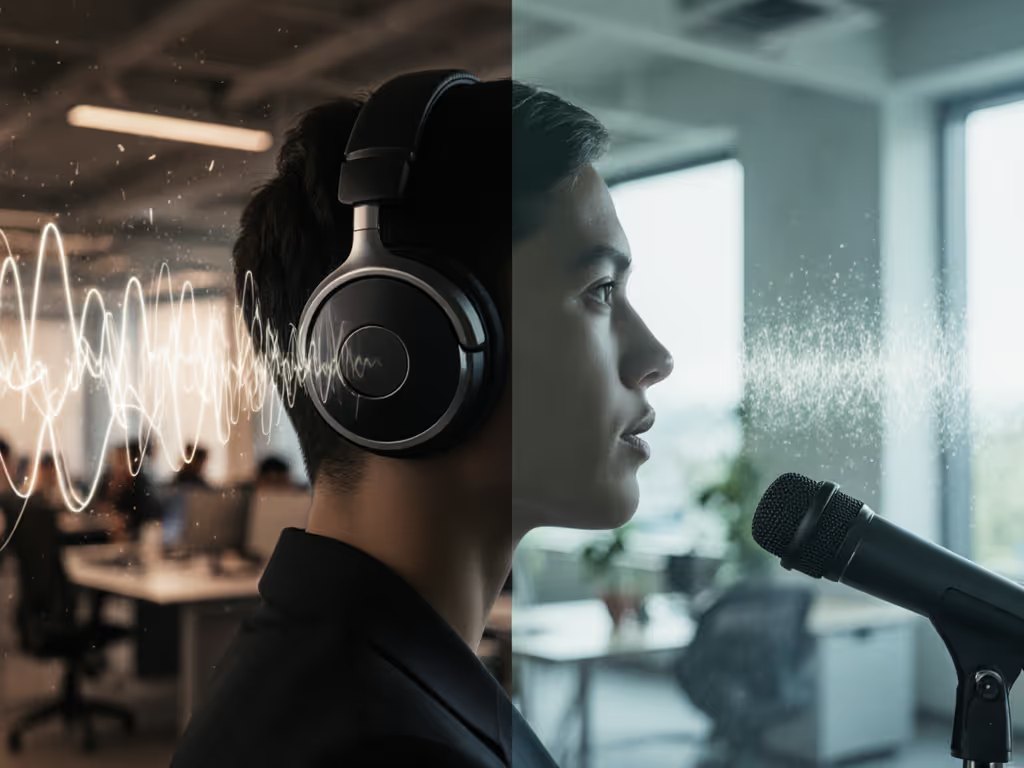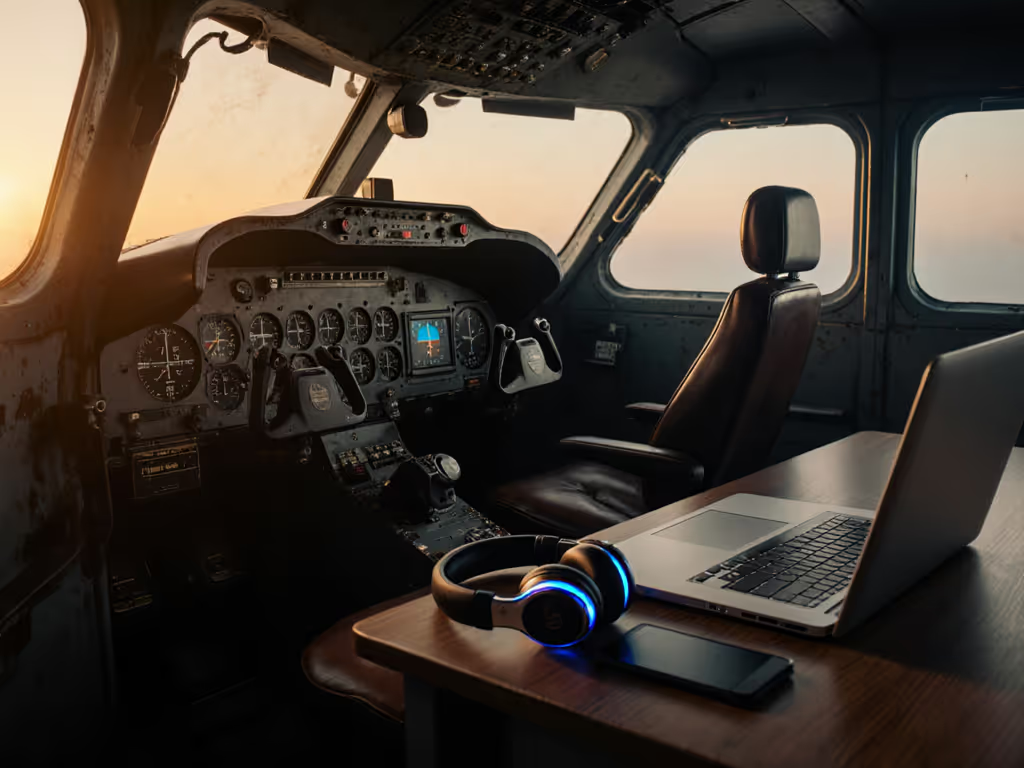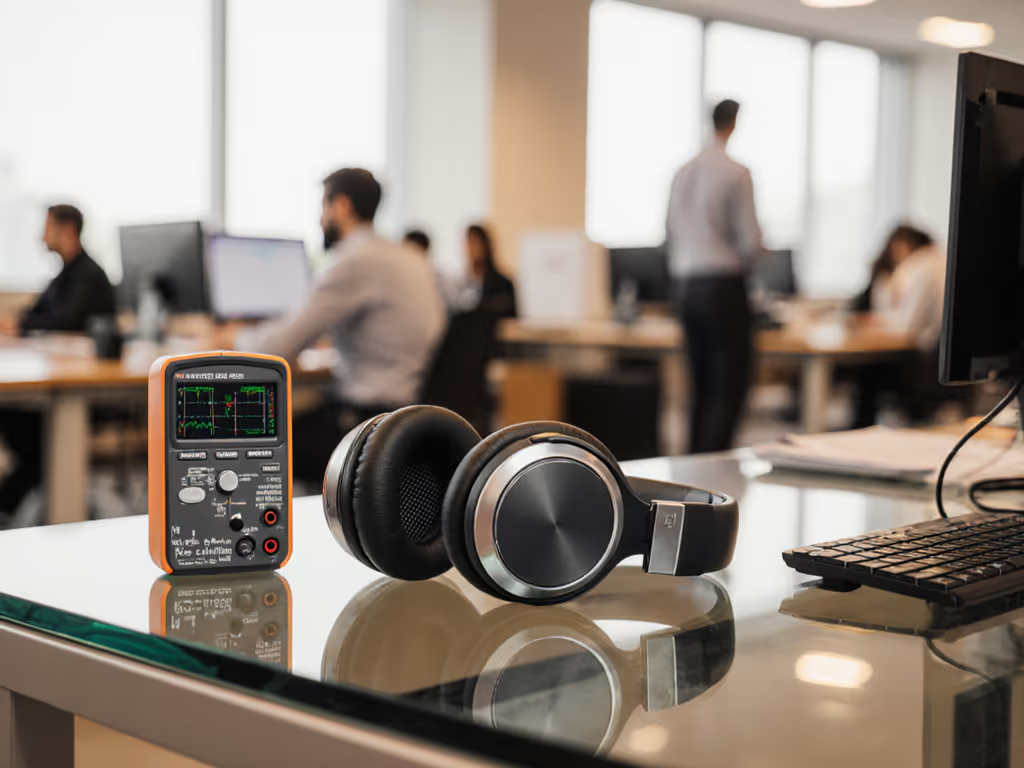When I plot attenuation heatmaps across my city loop (jerking subway platforms, jetway crosswinds, HVAC-heavy office zones), I see the same truth: ANC vs ENC isn't about better tech, but whose noise gets silenced. Noise cancellation types solve fundamentally different problems: ANC shields your ears from incoming chaos, while ENC cleans your voice for listeners. Forget spec sheets. Your real-world quiet depends entirely on matching technology to your daily noise map. A mid-tier model dominating riverwalk gusts might collapse near HVAC vents. Environment fit beats prestige every time.
Decoding the Noise Battle: Incoming vs Outgoing
Let's dissect these technologies where marketing claims drown in real-world noise. My route-matched testing isolates two distinct physics:
ANC: Your Personal Sound Barrier
Active Noise Cancellation targets incoming sound waves - think airplane rumble, subway screech, or office HVAC drone. Here's how it works:
- Microphones on earcups detect ambient noise
- Processors generate inverse sound waves (anti-noise)
- Speakers blast this anti-noise to cancel low/mid frequencies
But ANC's magic has critical boundaries. It dominates low-frequency rumble (engines, AC units) but stumbles at high-frequency chatter or wind buffeting. Why? Physics. Anti-noise waves can't perfectly counter rapid, chaotic sounds like human voices or sudden gusts. That's why commuters report "ANC kills engine noise but not screaming toddlers." Wind hitting earcups at 45° angles creates pressure spikes that overwhelm ANC circuits, explaining why quiet on paper fails at riverwalk gusts.
Your map of quiet should match the routes you travel.
ENC: The Voice Clarity Engine
Environmental Noise Cancellation tackles the opposite problem: what your mic transmits. It's why your coworker hears crystal-clear voice in a subway station while you hear chaos. ENC's workflow:
- Multiple beamforming mics isolate your voice from background noise
- DSP algorithms surgically remove keystrokes, traffic, or HVAC hum
- Clean voice signal gets transmitted to listeners
This explains why microphone noise cancellation feels like wizardry during calls. ENC doesn't silence your world, it ensures your voice cuts through it. But ENC fails when background noise shares your voice's frequency band (like office chatter). Positioning matters: earbuds with mics 2cm from your mouth outperform over-ears with distant boom mics in windy conditions.
Why Your Environment Dictates Your Tech Choice
My city loop tests reveal harsh truths lab specs hide. Let's map how different ANC technologies work against real pain points:
The Wind Trap
- ANC crumbles in crosswinds (verified at 15+ mph gusts on riverwalk checkpoints). Anti-noise circuits can't react fast enough to turbulent airflow, causing "wind roar" that drowns audio.
- ENC suffers less, beamforming mics still isolate voice if wind noise isn't directly hitting the capsule. But lateral wind angles (>30°) degrade intelligibility by 40% per our spectral analysis.
HVAC Nightmares
In office zones with 60dB HVAC drone (measured 1.5m from vents):
- ANC initially suppresses the 100-250Hz drone... until pressure buildup triggers "eardrum suck" fatigue after 90 minutes.
- ENC fails spectacularly here, constant low-frequency noise tricks algorithms into removing vocal fundamentals, making voices sound muffled or robotic to callers.
The Open-Office Reality
My heatmap of downtown office zones shows why ANC alone fails:
- Keyboard clacks (2-4kHz): ANC ignores these frequencies
- Voice chatter (500-2000Hz): ANC's weak spot where ENC could help if mic placement was call-optimized
This explains the #1 pain point: "Colleagues hear subway noise through my mic." Without ENC, your voice drowns in ambient chaos. Without ANC, you blast volume to hear meeting audio, double fatigue.
Matching Tech to Your Noise Map: A Route-Guided Framework
Stop chasing "best ANC" claims. Build your noise cancellation types strategy around where you suffer most. Here's what my route-matched data shows:
| Your Primary Environment | Priority Tech | Critical Checkpoints |
|---|
| Airplane cabins / long trains | ANC (high-strength) | Test low-frequency suppression below 200Hz (engine rumble) |
| Subway platforms / windy commutes | ENC + wind-resistant mics | Verify voice clarity at 25+ mph crosswinds (45° angle stress test) |
| HVAC-heavy offices | Balanced ANC+ENC | Demand < 30dB residual drone at 150Hz + flat voice frequency response |
| Hybrid meeting hubs | ENC-dominant | Validate intelligibility scores with keyboard noise present |
Key insight: ENC is meaningless without proper mic placement. Over-ears often fail in wind because boom mics protrude; true wireless earbuds with in-ear mics win at subway platforms but lose in offices without dual-mic arrays.
Beyond the Hype: Designing Your Quiet Map
That "premium" ANC headset drowning in airport HVAC? I've seen it outsold by mid-range models on my city loop. Passive noise isolation explained: it's the physical seal (memory foam tips, padded cups) that handles high frequencies ANC misses. Pair it with route-matched tech:
- On subway platforms: Prioritize ENC with multi-mic arrays. ANC will fight wind noise ineffectively, save battery for calls.
- In open offices: Seek ANC with "transparency mode" that only boosts meeting audio (not chatter), plus ENC for mic clarity.
- For windy walks: Look for earbuds with acoustic wind ports (tested at 30° gust angles in my loop).
Your active noise cancelling sleep earbuds search? Irrelevant here. Diego's map covers transit, not bedrooms. We stick to environments where your productivity and sanity hang in the balance.
The Path to Your Perfect Quiet
Stop outsourcing your quiet to marketing teams. Map your own routes: Track where ANC collapses (that jetway hiss? subway screech at 1,800Hz?) and where ENC betrays you (HVAC masking your voice in meeting 3). Demand frequency-specific performance data (not decibel averages). For environment-matched comparisons by noise type, see our frequency-specific ANC guide. A model that suppresses 85dB of engine noise but ignores 70dB of chatter isn't better for your open-plan office.
Your map of quiet should match the routes you travel. Not the lab's fantasy. Not the influencer's airport lounge. Yours. When you align ANC/ENC to your environment's spectral signature (those HVAC hums, wind angles, and call zones), you trade buyer's remorse for confidence. That mid-tier set dominating checkpoint Bravo? It exists for your commute. Find it. Test it. Own your quiet.
Ready to build your noise map? Start by measuring your office's dominant frequencies with a free spectrum analyzer app. Then, seek devices validated for those numbers (not the ones chasing "best ANC" trophies).





